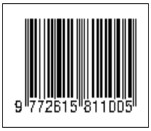KREDIT DAN MODAL SOSIAL DALAM PERSPEKTIF TEORI DAN PRAKTEK
Abstract
Keywords
Full Text:
PDFReferences
Akerlof G., (1970). The market for lemons:quality uncertainty and the market mechanism.Quarterly Journal of Economic 84(3):488-500.
Aleem, Irfan, (1990). Imperfect Information, Screening and the Costs of Informal Lending: A Study of Rural Credit in Pakistan. World Bank Economic Review, 4(3):329-349.
Anaroga, Pandji dan Widiyanti Ninik, (2003). Dinamika Koperasi. Rineka Cipta, Jakarta
Banerjee Abhijit dan Ester Duflo,(2010). Giving Credit Where It is Due. Journal of Economic Perspectives, Vol.24(3):61-80.
Bell Clive, (2017). Interaction between Institutional and Informal Credit Agencies in Rural India. World Bank Economic Review,4(3):297-327.
Bungin, Burhan, (2006). Teknik-Teknik Analisis Kualitatif dalam Penelitian Sosial dalam Burhan Bungin (ed.):Analisis Data Penelitian Kualitatif (Pemahaman Filosofis dan Metodologis ke Arah Penguasaan Model Aplikasi). Raja Grafindo Persada, Jakarta.
Cresswell. John W dan Cresswell J. David, (2018). Research Design:Qualitatives Quantitatives,and Mixed Methods Approaches (fifth edition). Sage, Los Angeles.
Dasgupta, A., (1989). Report on Informal Credit Markets in India:Summary. National Institute of Public Finance and Policy,New Delhi.
Fukuyama, Francis, (1995). Social Capital and Civil Society. Institute oof Public Policy, George Mason University, Virginia.
Ghatak, Maitreesh dan Guinnane Timothy W., (1999).The economics of lending with joint liability: theory and practice. Journal of economic Development, Vol.60 (1999):195-228.
Heumann Christian, Micahel Schomaker, Shalabh, (2018). Introduction to Statistics and Data Analysis. Springer International Publihsing, Switzerland.
Hidayati Bunga et al, (2017). Social Capital in Moneylenders Phenomenon in Blimbing Traditional Market Malang Indonesia. International Journal of Economic and Financial Issues, Vol,7(3):57-61.
Hoff Karla dan Stiglitz, Joseph E., (1990). Introduction:Imperfect Information and Rural Credit Market:Puzzles and Policy Perspectives. World Bank Economic Review, 4(3):271-295.
Indrawan Rully, 2004. Ekonomi koperasi:ideology, teori, dan Praktek Berkoperasi.Lemlit UNPAS, Bandung.
Neuman Lawrence,W.(2014). Social Research Methods: Qualitative and Quantitative Approaches. Seventh Edition Pearson, England.
Putnam Robert, 2000.Bowling Alone:The Collpapse and Revival of American Community. Simon and Schuster, New York.
Rochmadi Ikhsan, (2011). Analisis Dampak Perdagangan Bebas dan Global pada Bergesernya Nilai Budaya, Prinsip dan Tujuan Koperasi. Jurnal Ekonomika, Vol.4(2):45-51.
Santoso Thomas,(2020). Memahami Modal Sosial.CV Jawadwipa, Surabaya.
Sengupta Rajdeep dan Aubuchon Craig P., 2008. The Microfinance Revolution: An Overview. Federal Reserve Bank of St.Louis Review, Vol 90(1):9-30.
Siamwalla Ammar et al, (1990). The Thai Rural Credit System:Public Subsidies, Private Information, and Segmented Markets. World Bank Economic Review, 4(3):271-295.
Stiglitz, Joseph E., (1990).Peer Monitoring and Credit Markets. World Bank Economic Review,4(3):351-366.
Stiglitz, Joseph E. dan Weiss, Andrew, (1981). Credit Rationing in Markets with Imperfect Information. American Economic Review, Vol.71(3):393-410.
Tambunan, Tulus, (2015). Financial Inclusion, Financial Education, and Financial Regulation: A Story from Indonesia. Asian Development Bank Institute, Tokyo.
Woolcock, Michael dan Narayan, Deepa, (2000). Social Capital:Implications for Development Theory, Research, and Policy. World Bank Research Observe, Vol.15(2):225-249.
DOI: https://doi.org/10.35327/gara.v15i2.241
Refbacks
- There are currently no refbacks.
Copyright (c) 2021 GANEC SWARA

This work is licensed under a Creative Commons Attribution-ShareAlike 4.0 International License.










